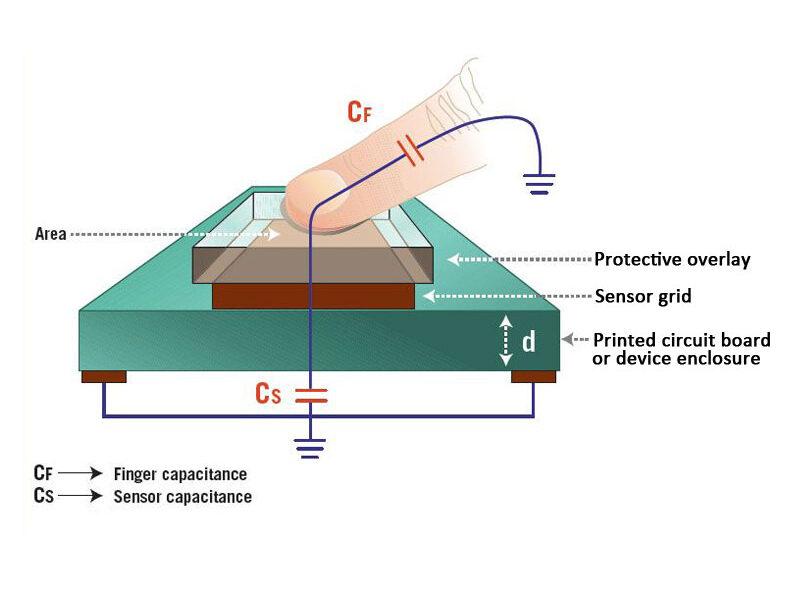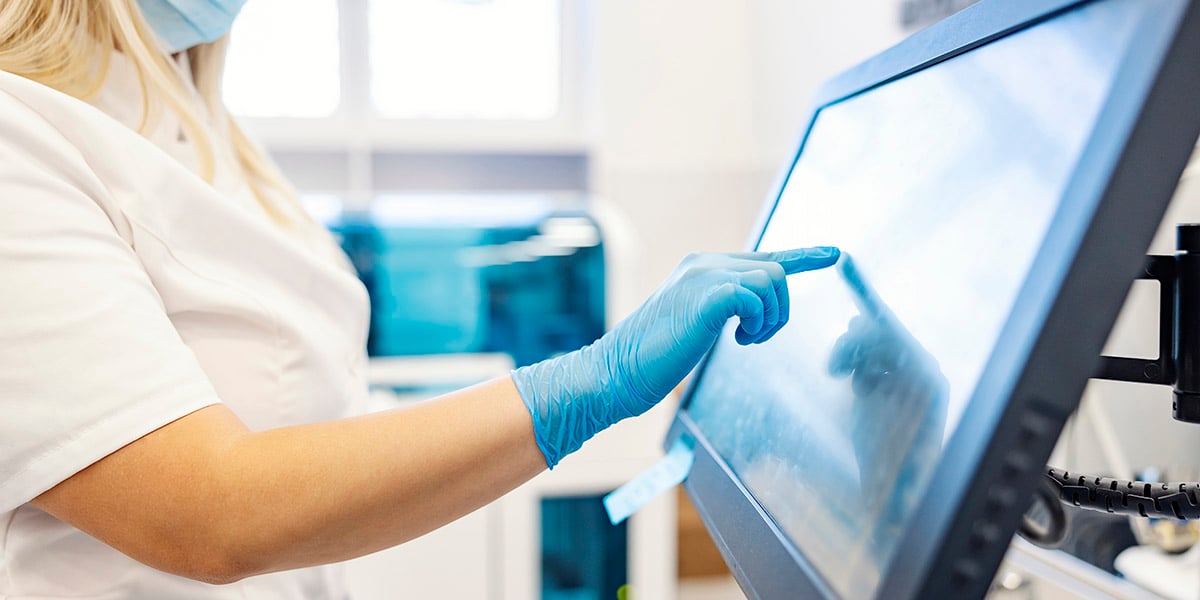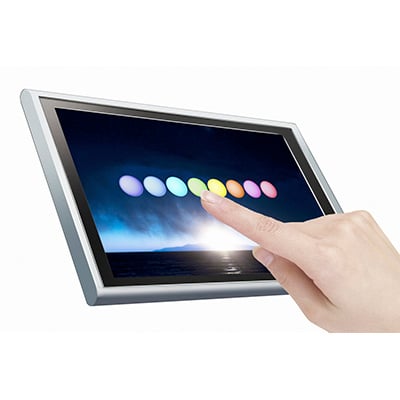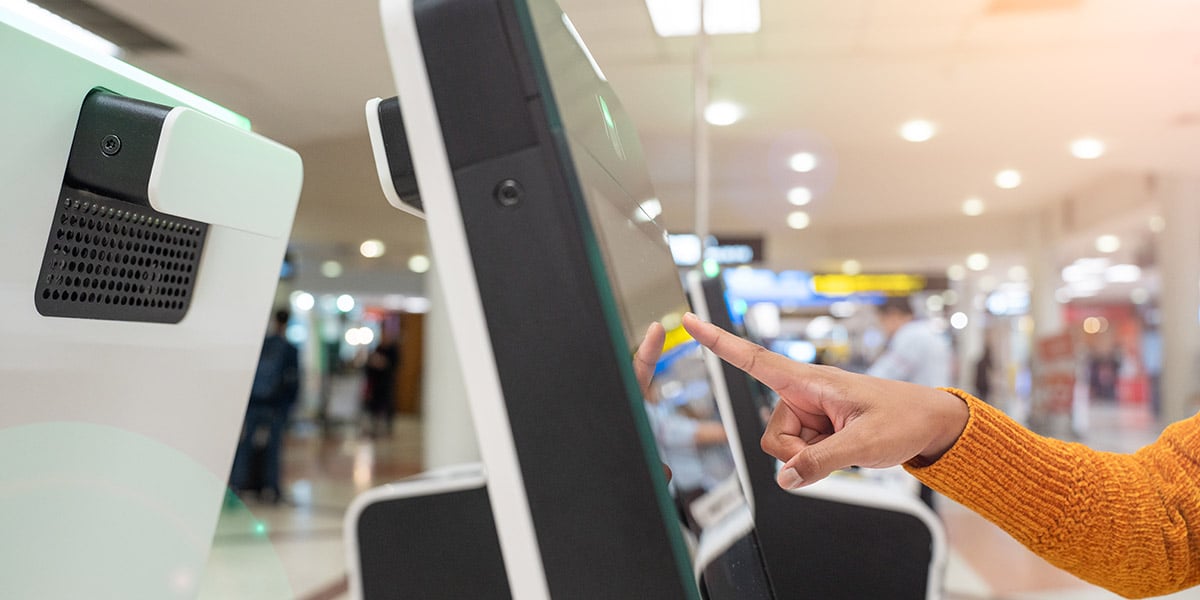PCAP is redefining the future of touch displays
Experience the power of projected capacitive (PCAP) technology.
Projected capacitive (PCAP) technology is the gold standard in touch innovation. Now available in larger panel sizes, PCAP technology opens the door for engineers in every market to harness its unmatched performance, durability, and sleek responsiveness in a wide range of applications.
Advantages
- Long life / Reliability
- True flat front surface
- Functional through multiple layers
- The best “look”
- Easy integration
- Multi touch functionality
Disdvantages
- Best used with direct contact – proper tuning required for glove applications.
- Water or high humidity on the surface can cause false touches or reduce accuracy.



Resistive touchscreens are the most reliable for demanding environments.
Resistive touchscreens offer a practical, reliable solution for demanding environments where durability and versatility matter most. Ideal for industrial, medical, and outdoor applications, they respond to any input—fingers, gloves, or stylus—making them perfect for users in protective gear.
Cost-effective and highly accurate, resistive technology thrives in harsh conditions where capacitive screens fall short. When precision and rugged performance outweigh the need for sleek aesthetics or multi-touch gestures, resistive touchscreens are the smart, dependable choice.
Advantages
- Ease of integration
- Cost effective
- Use with gloved hand or stylus
Disdvantages
- Lower brightness performance
- Front surface durability
- Limited touch points

Boost Display Clarity with Optical Bonding.
ITG’s optical bonding reduces ambient light reflections by eliminating the air gap between the cover glass and LCD. This enhances contrast, minimizes glare, and delivers a clearer, more durable display in any environment.

There is no project too tough for ITG!
We don’t charge extra for the tough projects. In fact, all of our up-front design and engineering time, including your first prototype, are free of charge.
Grow with ITG
Happy Customers
Sales Calls
Team members
Global Revenue

President
David
As the President and Owner of ITG Engineering, I am committed to working directly with our clients. There is a deep passion with our team to always go the extra mile. Solving the toughest problems and challenges for our clients is where we shine!

Design Lead
Laura Jones
Their attention to detail, ability to integrate seamlessly with our existing systems, and unwavering dedication to craftsmanship set them apart from any other provider we’ve worked with.

Manufacturing Lead
Denise
From the start, ITG impressed us with their deep design expertise, innovative approach, and commitment to quality.
Lorem ipsum dolor sit amet







Pricing Packages
Lorem ipsum dolor sit amet, consectetur adipiscing elit. Suspendisse varius enim in eros elementum tristique.
Standard
Lorem ipsum dolor sit amet, consectetur adipiscing elit. Suspendisse varius enim in eros elementum tristique.
Premium
Lorem ipsum dolor sit amet, consectetur adipiscing elit. Suspendisse varius enim in eros elementum tristique.
Ultimate
It's time to choose an expert!
Over the past 30 years we have helped our customers by improving performance and productivity. We do this by designing, manufacturing and providing excellent customer support on display integration including touch screens.
Meet the Team!
Book time directly on my calendar.
David Michielli - President
